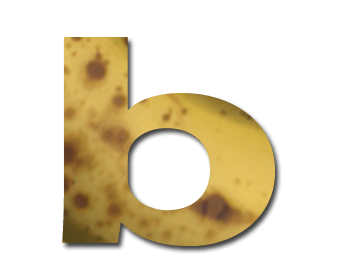
Dyslexia stencil tool
If someone you know gets their letters back to front when writing, this could help. A stencil tool to help people who get confused when writing the letters 'b', 'd', 'p' and 'q'. Available to purchase from The Dyslexia Shop.
When learning to read and write, many children are confused by the similarity of some letters and numbers. A common case is the letters b, d, p and q which are reflections and rotations of the same shape. For about 10% of the population difficulty reading and writing the correct letter persists into adulthood as dyslexia.
The stencil is a small aide-memoire which is kept at hand when writing. It has pictures of easily recognised objects that allow the user to correctly orientate the central hole for the target letter. Hopefully the user can then write the letter unaided with just the visual cue. If not, the stencil can be placed on the paper and used to guide the user's hand in tracing out the correct letter shape. This promotes muscle memory facilitating the mental link between the letter sound and the letter shape.
The tool has been tested in UK primary schools with positive results. Users and teachers have found that it is easy to use, helps to promote independence in writing and can be used discreetly enough to avoid embarrassment for the user.
Available for purchase from The Dyslexia Shop or, if you can't get them there, from our shop.
Consider the banana...

...turn it around...

...flip it over. It's still a banana.

Now consider the letter 'p'...

...try flipping it over.

To many young children this is understandably very confusing.

Almost 1 in 10 people continue to experience dyslexia into adult life.
The letters b, d, p & q are reflections and rotations of the same shape. Consequently some learners have difficulty recognising them and telling them apart. For these people progress in reading and writing may be slow. The tool is an aide-memoire which can be kept close at hand when writing and is small enough to be discreet and to be carried around. It features pictures and accompanying labels on each face which have been chosen to contain graphemes (letters corresponding to phoneme sounds) which are taught early within all UK phonics schemes.
When writing, the user recognises the need for a, say, 'd' for dog sound. By turning over and/or rotating the stencil until the dog picture is showing the right way up, the correct letter is selected via the hole in the middle. Hopefully the user can then write the letter unaided with just the visual cue. If not, the stencil can be placed on the paper and used to guide the user's hand in tracing the letter out onto the paper.

The standard design is injection moulded from 2mm thick recycled nylon. It is manufactured in the UK using the waste stream from a local plastics factory. Using nylon creates a product that is smooth, strong, tough and easy to keep clean.
The design uses cartoonised representations of a bed, a dog, a pig and Queen Elizabeth II's head for the letters b, d, p and q. These correspond to words used in the UK primary education system to teach the target phoneme-grapheme correspondences.
Injection moulding creates a product that can be mass produced at both uniformly high quality and low unit cost. The product is recyclable at end of life through normal household recycling collection.
For other languages and cultures the design can be easily be adapted to different lettters, numbers and graphics. The tab discusses some of these alternative embodiments.
Our intellectual property as inventors of these teaching tools is protected by UK Intellectual Propery Office registered design, number 6132152.

